A healthy dog at rest takes about 20 breaths per minute. If he breathes more frequently, coughs, wheezes, or makes other sounds when breathing in or out, it is a sign of ill health. Diseases in any part of this system can cause breathing problems. It is not possible to tell right away why a pet is breathing heavily. To do this, you need to pay attention to the accompanying symptoms.
Reasons why dog sounds congested:
Excitement and stress
Stress and psycho-emotional reasons lead to difficult breathing in pets. A dog often breathes after experiencing stress, fright, or excitement. Some pets react quite emotionally to strong external stimuli. If breathing function is impaired due to stress, do not panic too much. As a rule, breathing will gradually normalize. Calm your dog down and eliminate the negative factors.
Foreign objects entering the respiratory system
Veterinary practice shows that this is the most common cause of strange breathing sounds in dogs. During walks, almost all dogs actively explore everything around their noses, and there is always the possibility that they may inhale a blade of grass, a small stone, a piece of paper, or other debris.
This negatively affects the passage of air, and breathing begin to occur uncharacteristic sounds – whistling, sniffling, grunting, wheezing, and dog snort like he can’t breathe. But the danger is not in them, but in the fact that the animal is not able to breathe normally.
With some medical or veterinary skills, you can help your dog yourself.
First aid for the dog:
- Open his mouth;
- Use a piece of cloth or towel to pull his tongue away. Hold it with one hand and inspect the back of the throat with the other. Or you need to have someone hold the animal, securing it in a comfortable position for the procedure;
- Take a flashlight and long tweezers and carefully examine the mouth, looking down the throat. If a large foreign object has entered there, it will be visible upon visual inspection;
- Be very careful because a sloppy movement might block his airway completely, pushing the object deep down or damaging his mucous membranes;
- If the dog is small, lift it by its hind legs, perhaps gravity will help the foreign body to dislodge and clear the airway;
- A large pet should be pushed in the chest to push the object upward.
ATTENTION! If the owner does not know how to do this, it is better to get professional help without making the situation worse.
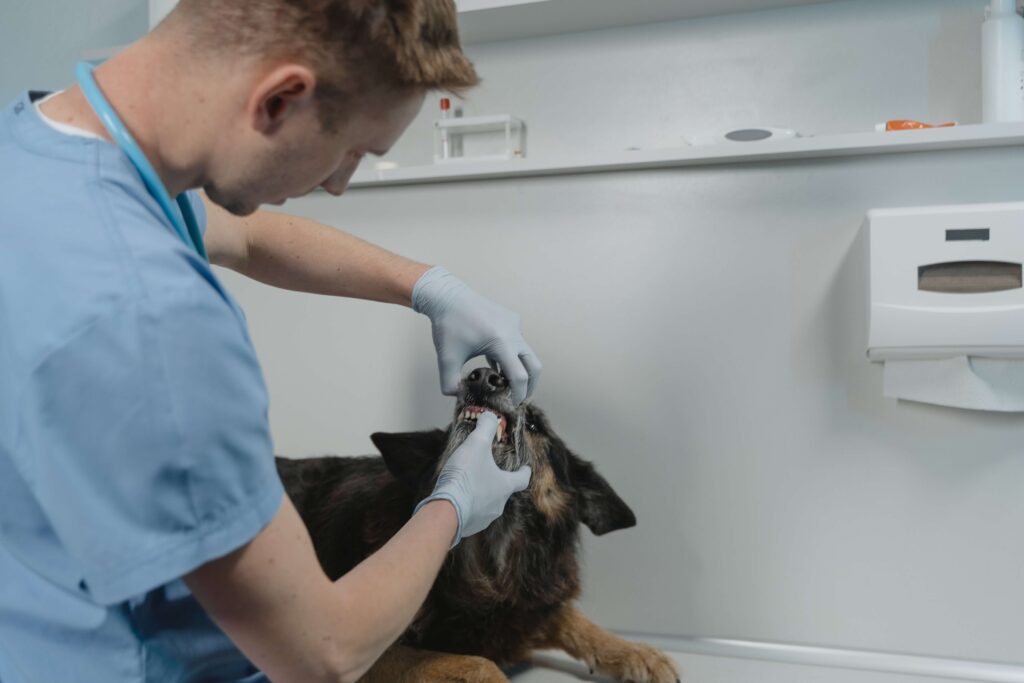
Breed predisposition
Problems can occur in any breed, but they are especially common in animals with flat muzzles, narrowed nostrils, and an elongated soft palate.
These include: French bulldogs; pugs; Yorkshire terriers; Chihuahuas; Shih Tzu; Chow Chow; Sharpies; Japanese Chins; Boxers; Pekinese; Bullmastiffs; Cane Carso; Boston Terriers; Bordeaux Dogs; Lhasa Apso; and some others.
These breeds are called brachycephalic. Their airways are arranged in such a way that they wheeze and breathe loudly when overstressed. This breathing cannot be cured, as it is caused by the natural structure of these dogs. If the animal develops a really serious problem – brachycephalic obstructive breathing syndrome, the veterinarian may recommend surgical intervention: surgery to enlarge the stenosis of the nostrils; removal of the tonsils; resection of the soft palate.
Overweight
Owners should monitor the weight of the brachycephalic breed. Obesity can also cause difficulty breathing. Obese dogs have more difficulty moving and playing. They tire faster and breathe harder. To lose weight: Get him the right amount of exercise for his age and breed; change his diet to less calories.
Allergy
Symptoms: sneezing; signs of asthma, including wheezing; difficulty breathing; itchy skin and eyes; continuous licking of itchy places, dog sounds congested when breathing. Causes: foods, chemicals, and poisonous substances. For example, a new feeder, a bee sting, cigarette smoke, etc.
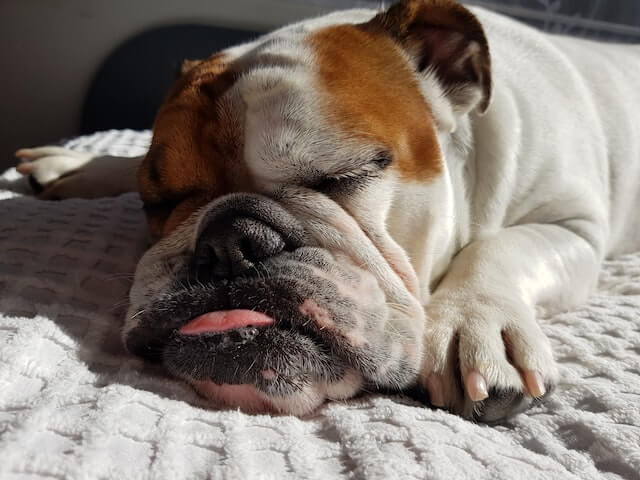
Heat Stroke
There is a very high likelihood of heat stroke in a pet left in the car in the summer while you go shopping. Not only does he experience overheating and stress, but he may lose consciousness and die from lack of oxygen.
Signs of heat stroke include heavy breathing; excessive salivation; lethargy; drowsiness; vomiting; and uncoordinated movement. Very old or young dogs, pets with thick coats or flat muzzles, and animals with chronic cardiovascular or respiratory problems are the most likely to get heatstroke.
First aid for a dog with heat stroke:
- Move the animal to a shaded, cooler area;
- Bathe with cool, but not cold water. Wet towels may be used;
- Give a drink if the dog is conscious;
- Continue to irrigate the body with cool water until breathing stabilizes;
- Then take your dog to the vet.
IMPORTANT: If your dog is breathing rapidly and shallowly with his mouth wide open and his tongue sticking out, he should be taken to a cooler place as he is trying to cool his body this way. Rapid breathing with the mouth closed is a sign of illness.
Tumor
Dogs can also develop cancerous neoplasms in the body, including in the respiratory tract. In this case, the tumor acts as a foreign body blocking breathing. In the following cases, the pet needs a diagnostic examination:
- strange breathing sounds appear gradually, this may occur over a period of months or even years;
- if these symptoms intensify, respiratory problems arise, and the dog often coughs;
- the dog’s general condition worsens – the dog is lethargic, apathetic, not interested in the events around him, and refuses to eat;
- there is a runny nose, in which there is bloody mucus and particles of destroyed tissue.
Such symptoms are a good reason to visit the veterinarian.
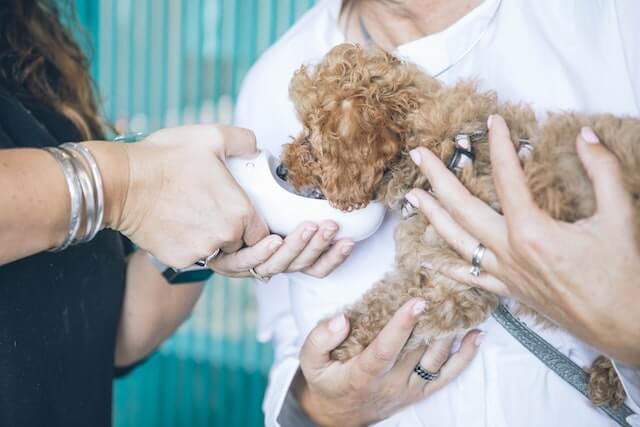
Parasites in the respiratory tract
At least three types of pulmonary helminths can occur, albeit with varying degrees of probability, in dogs. If there are many, the pet’s breathing (especially a puppy) will naturally deteriorate as air cannot pass through the airways properly.
When the dog breathes, gurgling, wheezing sounds are heard, he starts grunting, sniffling, trying to push air into the lungs with irritated and inflamed walls. Regarding the development of this clinical picture, it is highly recommended to contact the veterinarian, as further delay is fraught with the development of pneumonia or severe bronchitis.
Paroxysmal Respiratory Syndrome
This pathology is among the characteristic disorders that occur specifically in dogs. During the attack, the dog may make a variety of sounds – grunting, cooing, gurgling, sniffing, or wheezing. But such a condition is not dangerous for the animal itself, although it causes concern to the owners.
In some cases, the attack is accompanied by signs similar to suffocation, and the owners panic and go to the veterinary clinic. In this condition, the pet, in addition to strange sounds, has the following manifestations:
- The dog assumes an unusual posture – his limbs are spread wide and his back arches inward;
- His eyes bulge and become red;
- The dog begins to actively shake its head from side to side, drooling in different directions.
Reverse sneezing attacks
Reverse sneezing is an attack that looks like a dog suddenly takes a breath and can’t exhale, causing him to choke. Such attacks look scary, but there is no reason to panic. This process often begins suddenly, and so goes suddenly.
Specialists have not yet been able to figure out the exact cause of this pathological condition. But its occurrence is associated with a sharp paroxysmal spasm of the soft palate tissue. Based on the fact that reverse sneezing occurs in 93% of cases in brachycephalic breeds, doctors believe that among the main disposing factors is a natural predisposition.
Veterinarians recommend that owners do not panic if the attack lasts a few seconds and does not cause serious symptoms. But it is necessary to go to the clinic if the overall condition of the pet during the reverse sneezing noticeably worsens.
To help the pet on the spot, you can do the following:
- gently rub the lobe of the nose;
- massage the surface of the throat;
- when the dog breathes, you should give him a drink of warm water and leave him alone.
- Everything should be done calmly, without sudden movements and panic, you should not make the dog nervous.
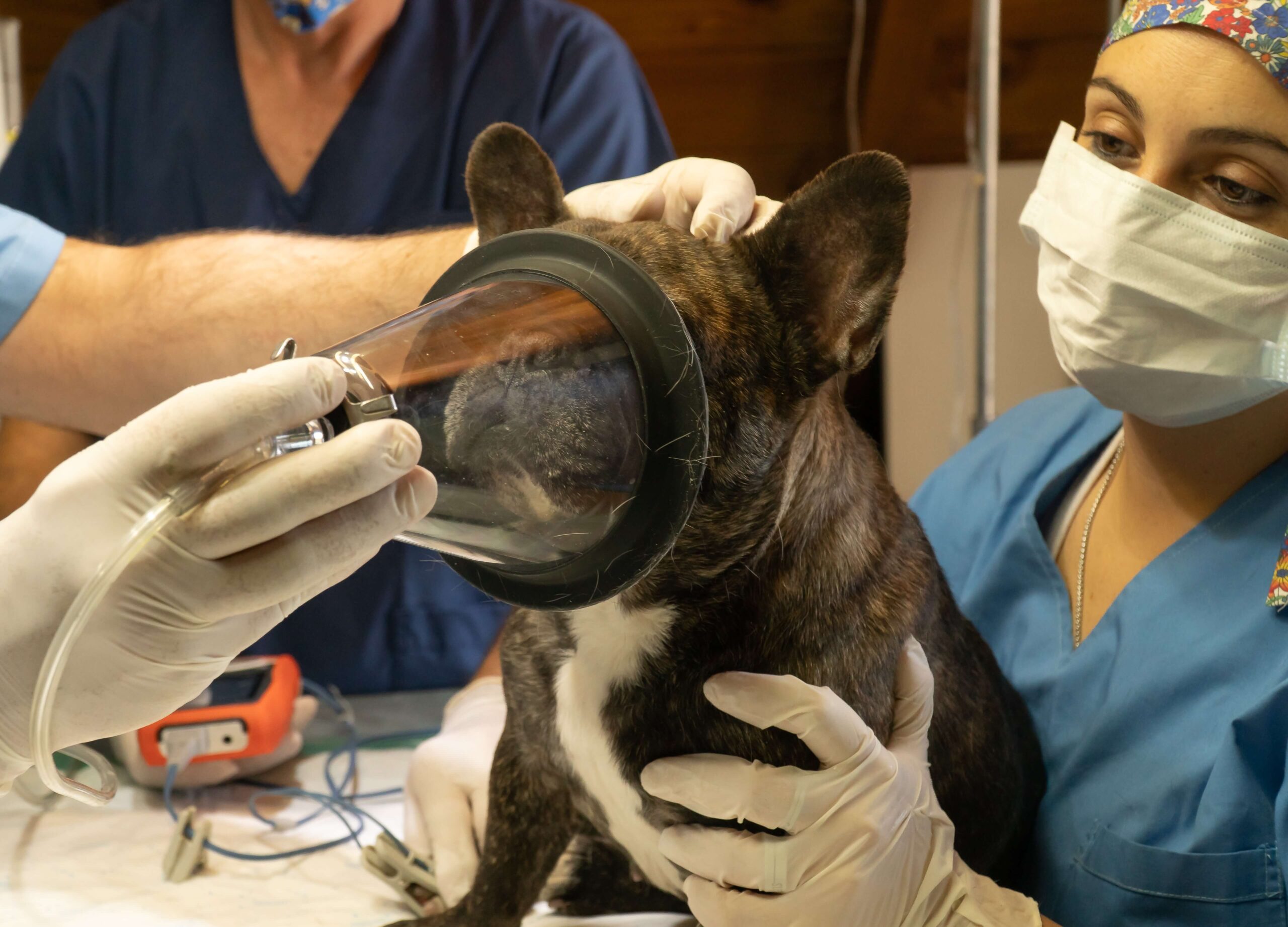
Tracheal collapse
One of the unpleasant pathological processes, is characterized by a sudden and unpredictable development. With the tracheal collapse, the trachea shrinks and becomes so small, in some cases, that it becomes completely obstructed. As its lumen shrinks, the dog grunts, wheezes, and hisses. The dog feels unwell, panting, and holds its mouth open all the time. On examination, his mucous membranes may become blue or prune-colored, signaling severe oxygen deprivation. If this condition persists for some time (from a few minutes and sometimes hours), the dog may become comatose or suffer intermittent seizures after being cured.
You should definitely not wait – take your pet to the clinic immediately. In severe and even relatively severe cases, you have to do a tracheotomy. That is, the surgeon will carefully cut the tissue of the trachea in the gap between its rings and then perform intubation (insert a special plastic tube into the lumen of the organ). Only then will the dog be able to breathe normally, and there will be no danger of strangulation.
Rhinitis (inflammation of the nasal mucosa)
The cause is hypothermia. If the animal has a cold, he will have a sharp decrease in appetite, appear lethargic, difficulty breathing with whistling and hissing, and nasal discharge will be greenish in color with an unpleasant odor.
Colds
Young dogs have an increased risk of developing respiratory illnesses. This is mainly because their respiratory and immune systems are not fully developed. Therefore, they often suffer from fluid stagnation in the lungs.
Kennel cough. Symptoms of the disease: sneezing; gagging; reddened mucous membranes of the nose and eyes; apathy; dogs breathing sounds like snoring; decreased appetite; increased temperature; discharge from the eyes. Canine influenza. Symptoms include wheezing; fever; wet cough; discharge from the eyes and nose; sneezing; fatigue. The dog should be rested and given room temperature water to drink until a visit to the vet.
ATTENTION! If the cough is very intense, painkillers are prescribed. Otherwise, the constant tension of the respiratory organs will cause scarring of the lung tissue and complicate the treatment.
Heart Disease
May be accompanied by difficulty breathing and wheezing. Small dogs that are more than 5 years old account for about 75% of animals with heart disease. Diseases may be accompanied by the following symptoms: decreased motor activity; weight loss; wheezing or difficulty breathing; and chronic fatigue.
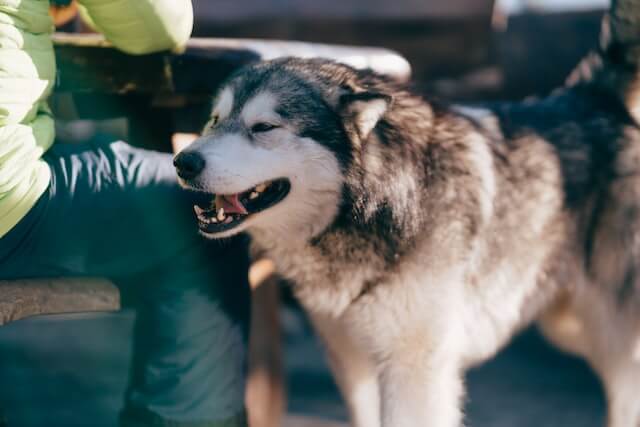
How to help a dog at home
Before you do anything, assess your dog’s condition. Make sure the dog’s airway is clear. Check to see if any objects are lodged in the back of the throat. If so, try to remove them. If not, make sure it is cool and free of stimuli (noise, loud music) so the dog can calm down. Pets who wheeze, cough, and have difficulty breathing should have access to oxygen. Also, create a calm environment indoors. Be sure to call your veterinarian after eliminating the life-threatening condition.
How is the diagnosis
To make a diagnosis, the doctor will need to examine the dog and listen to his breathing, making sure there is or is not a lung murmur. The color of the gums will also be evaluated, as it indicates whether oxygen is getting to the organs efficiently and whether anemia is present (the number of red blood cells will be low).
Additionally, blood tests will be done and X-rays; ultrasounds of the lungs and heart may be prescribed. Until breathing improves, the dog may be hospitalized. Treatment will be prescribed depending on the symptoms and established diagnosis.
Prevention
There are many diseases that provoke breathing difficulties. Prevention will be different:
- Regular vaccinations protect against infectious diseases;
- From obesity and internal diseases – a balanced diet and ensuring a good level of physical activity for the pet;
- Respiratory illnesses are countered by a strong immune system, and a healthy, well-nourished dog has one.
Treatment should be successful if it is administered in time, the disease is diagnosed accurately, and you follow the doctor’s recommendations. The ability of the dog’s body to heal itself is enormous, which speeds up the recovery, and minimizes the chance of complications.
